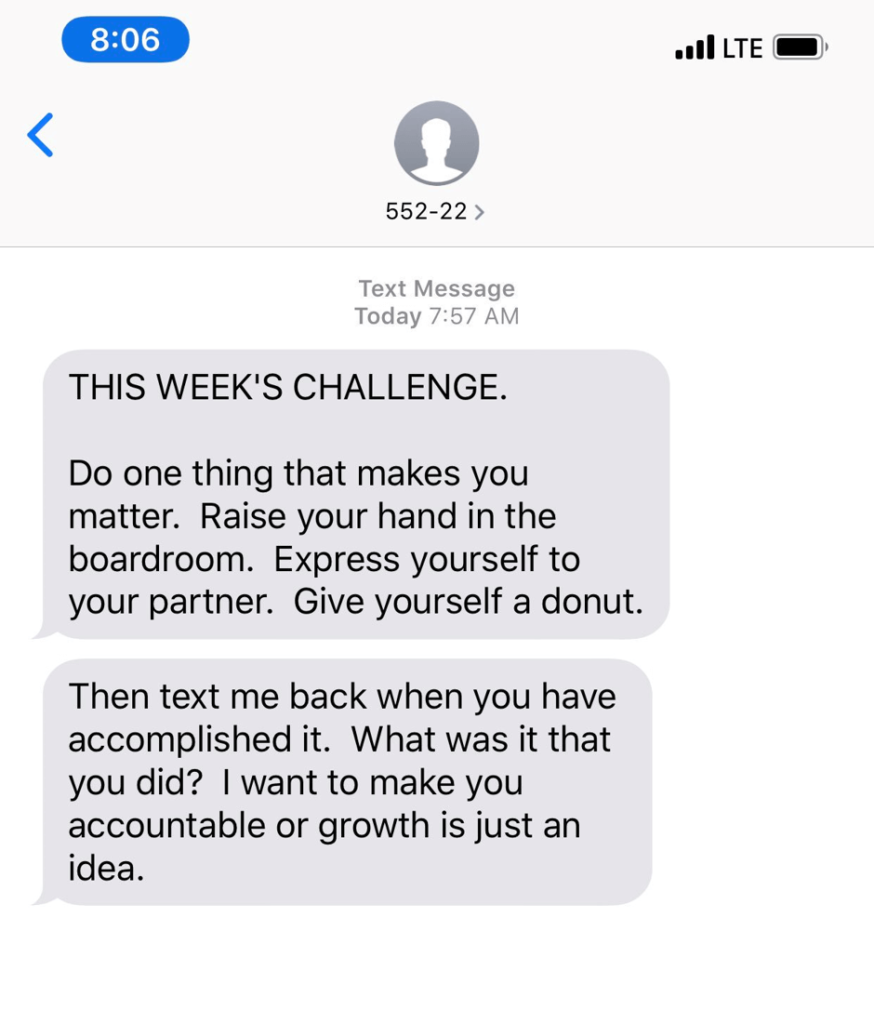Marketing Strategies
Are HubSpot's new Enterprise Hub updates a big deal? [Interview]
If you run in any HubSpot circles, you’ve no doubt seen news about updates to the Enterprise Marketing Hub announced earlier this month.
To help put these announcements in context, I sat down with resident HubSpot ninja Carina Duffy.
Putting the updates in context
John: HubSpot has announced its new Marketing Hub Enterprise updates. Is this a big deal or not?
Carina: I would say somewhere in between. It’s probably not as big a deal as HubSpot made it sound, but it’s not insignificant.
A lot of the features HubSpot rolled out with this announcement have been teased, or announced, or had active beta tests. So it wasn’t like nobody knew these features were coming out.
They’re calling it the new Marketing Hub Enterprise, but it’s really just a collection of the developments and updates that HubSpot has been putting a lot of effort and energy and focus into for their enterprise-level platform.
I think it’s HubSpot’s way of saying, “We want you guys to know that this is a priority for us. It’s a big focus for us going into 2020, and we want you to see that all of these things we’ve been working on fit into this bigger strategy.”
John: Are these updates things that HubSpot had to do to keep up with the marketplace?
Carina: I think that HubSpot is trying to catch up, more so than anything. Historically, HubSpot was built for SMBs, and they’ve really only recently gotten into the mid-market and enterprise-size companies. Suddenly, we’re talking about companies with multiple marketing teams, different business units.
Of course, those companies have much more complex needs, and HubSpot has been working on building out the enterprise-level toolset to be able to cater to those companies.
They’re now trying to catch up to platforms like Salesforce and Microsoft Dynamics and really trying to compete. This is why I think this announcement is significant. It’s saying, “Yes, in the past we’ve really been focused on SMBs, but we’re getting into the big leagues and we want to compete.”
That doesn’t mean they’re going to become Salesforce and they’re going to try to do everything that those other platforms do. But they really do want to be a solution for those big companies that have complex needs and multiple teams.
A lot of these updates that they’ve announced are all catered to those types of companies.
What’s actually in these updates?
John: So what about this update is the most exciting for you as a HubSpot aficionado?
Carina: I’m excited about the account-based marketing features because it’s something that people have been asking for for a long time. They really haven’t existed, but a lot of people are doing and trying account-based marketing right now.
John: What is account-based marketing?
Carina: Rather than trying to do inbound in a way that’s just attracting anybody and everybody, account-based marketing allows us to focus on target accounts. We could build something like an ideal target client — and then we can look for specific companies that fit that ideal.
So, some of the new features HubSpot has built out are more focused dashboards and reports around account-based marketing. They’re also going to roll out company scoring.
Right now you can do things like lead scoring and other types of scoring at the contact level. You can create multiple scores, but right now there’s no way to do that for a company. With company scoring, you’re going to be able do more sophisticated identifying of those target accounts.
John: What else excites you about this update?
Carina: The second thing that I’m excited about is the advanced targeting in Conversations.
A couple of the things that you’re now going to be able to do is target your live chat or chat bot conversations around are the country, the browser language of that person, and their device type.
Those are kind of standard, but the things that I’m more excited about are new: the number of visits that a visitor has had on the site, and the number of days since their last visit.
So, you could say, “Hey, if they’ve visited within the last five days, we want to give them a different message than if they haven’t visited for more than five days,” which is really awesome.
We can know if they’re coming back, and we can get a lot more targeted there. Then, it’s forms that they’ve viewed, calls to action that they’ve clicked, and segmented lists, which is huge for any kind of targeting or segmenting.
If I already have contacts in my CRM and I know how I want to segment them, I can just build these lists and then I can target my specific chatbots that I’m building out based on what lists people are on.
I think that’s definitely something people have been really wanting in the Conversations tool. It’s something that’s going to make that tool more competitive compared to something like Drift.
To me, this shows a renewed focus on the Conversations tool, which I think is only a win for everybody.
Most of the time, when these new tools and updates come out at the enterprise level, eventually they trickle down in some form to all users.
What isn’t in these updates?
John: Is there anything you wished this update included that it didn’t?
Carina: I have gotten to know a lot of people on the product teams at HubSpot, whether it’s product marketers or people directly working on the products.
And I have so much respect for what they do, and the things that they’re working on, and I have so much respect for what it takes to develop software. So when any update comes out, I’m excited.
But I will tell you something that I’m excited about that I know is on the radar of the product teams and is potentially going to be coming out soon: more detailed reply routing for marketing emails.
Right now, if you send a bulk marketing email to 1,000 people and 10 people reply to it, there’s no way to automate where those replies go or what happens — and there’s no way to track to see who replied to it.
So you send out this really amazing, engaging marketing email and people start replying to it, but there’s no way to track that in the CRM. And that’s something that they’re going to be working on and they’ve been working on this year, which is very exciting for me.
The other thing that I will say that I was hoping would be in an announcement like this is custom objects.
John: What are custom objects?
Carina: Objects in HubSpot are things like your contacts, companies, deals, and tickets. But in order for HubSpot to really be competitive with Salesforce or Dynamics, or any other big, configurable CRM, they need to offer more customization options.
This is something that they’ve explicitly stated that they’re working on, and I’m excited for them to roll out.
Marketing Strategies
Why you need an SMS chatbot right now: Six strategic best practices
30-second summary:
- Enabling an SMS chatbot for your business unlocks one of the most valuable things in your customer’s daily life, their text message inbox.
- One of the greatest things about SMS is that everyone uses it. All carriers, all phones. Even non-smartphone users can text, so the reach is incredible.
- When you add a chatbot to traditional advertising, you finally give attribution and measure the performance of billboards, radio ads, and, commercials by tracking conversations started.
- Don’t wait for RCS and Apple Business Messaging to make the most of the existing opportunities. There are still smart things you can do to make things easier for the user to reply that’s already built into most smartphones.
- How do you design a strategic, conversational experience on SMS? Here are six best practices.
SMS chatbots are the future. Not the ones you may be familiar with, coupons from Bed Bath & Beyond and World Market, hair salon appointments, and let’s not forget Joe Biden’s bot-turned meme website. Conversational SMS chatbots are the future. What are they? An experience that delivers value in a text message, just like bots currently do on Facebook, Twitter or a website. In this post, you’ll learn exactly why SMS chatbots are a valuable asset to your marketing strategy, and how to design a strategic, conversational experience on SMS that your customers will love.
Why are SMS chatbots such a game-changer?
Customers love to text, and they want to text with businesses. These stats illustrate only a few of the impressive reasons why you should add SMS to your marketing strategy. Enabling this channel for your business unlocks one of the most valuable things in your customer’s daily life, their text message inbox.
SMS chatbots aren’t as popular as website and Facebook chatbots are currently, perhaps because there are fewer self-serve providers that make it easy to implement an SMS chatbot quickly. This is an opportunity. By taking advantage of one of the many types of SMS chatbots, which I’ll touch on later, text-enabling your business will put you ahead of your competition.
Additionally, as a marketing channel, SMS is superior to websites and Facebook. Here’s why:
Thinking of properties you “own” (a website) vs ones you don’t (Facebook), SMS is one that you own - your phone number. Unlike a website, SMS is a persistent channel. Non-persistent means when a lead leaves your website, even if they interacted with your website bot, they are gone, and you cannot engage them again. With persistent channels, a lead messages you on Facebook or texts you, and they become a user that you can re-engage strategically at a later time. This makes SMS a double win - an owned property that’s also persistent.
Lastly, one of the greatest things about SMS is that everyone uses it. All carriers, all phones. Even non-smartphone users can text, so the reach is incredible. Don’t forget about those incredible open rates I mentioned earlier, which are far greater than email or organic social media posts.
What are the benefits of adding an SMS chatbot to your advertising strategy?
One of the most unique things about SMS chatbots is that they breathe new life into traditional media and advertising. It’s very difficult to validate and measure traditional advertising (billboards, commercials, print ads, radio, mailers) but they are still viable ways to advertise, often having lower costs than Facebook and Adwords. When you add a chatbot to traditional advertising, you take advantage of the following:
- You finally give attribution and measure the performance of billboards, radio ads, and, commercials by tracking conversations started.
- Add “call OR text us” to every single lead you have.
- Add shortcodes (303–30) and keywords (JOE) to billboards and mailers to increase visibility.
- Create measurable keyword and texting call-to-actions for websites, commercials, and print.
- Utilize new messaging (hate talking on the phone? send us a text!) and SMS-compatible CTAs on traditional sources, like QR codes.
Are you convinced that SMS chatbots are great yet? Let’s explore the types of SMS experiences available, and how to create an enjoyable experience for your customers.
What are the types of SMS chatbots?
One thing I’ve noticed about any SMS automated experience that I’ve ever interacted with is that they fall into the following categories: Subscriptions, notifications, mass messages with links, human-powered, and conversational experiences.
Let’s review each type.
1. Subscriptions
You sign up for something, and it delivers you a message each day, like a quote or photo. The Angry Therapist is a good one.
2. Notifications
Reminders to go to the dentist, your prescription is ready, or you have a new phone bill.
3. Mass messages with links
Bed Bath & Beyond coupons, political campaigns, bus ads. Typically you sign up for something online or via their shortcode (that five-digit number like 303-30) and you periodically receive a message, but it always includes a link to their website. This sort of SMS chatbot defeats the purpose of sending the message, why not provide the website link upfront?
The Cereal School was a bit more engaging with the photo and emojis in their example, but their conversation fell flat when I tried to reply and received nothing back. This is email newsletters over text.
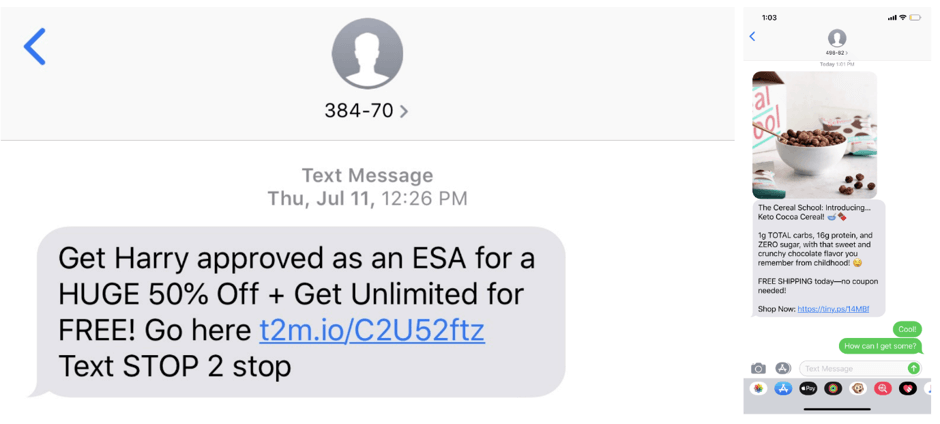
4. Humans + Bots
Magic, Fancy Hands, Fin. These are conversations potentially initiated or partially managed by a bot, but all of the actions and behind the scenes work is done by humans, and a lot of times, humans are the ones who even send the texts too! The interesting thing about these hybrids is that they put us in the frame of mind of what could be possible when texting with a chatbot, but they aren’t there yet.
Notice what’s missing? Automated conversational experiences. Conversational SMS chatbots should be the best practice.
So how do we do it? To me, the future looks something like this. Two-way, conversation-based experiences that are extremely valuable for the user.
Qualifying directly inline. No links, no websites. Texting a 1–800 vanity number that you can also call. Clear re-engagements (without time limit restrictions). Recalling customer details during the conversation. Customers acting on their time. The list goes on.
How do you design a strategic, conversational experience on SMS? Here are six best practices:
1. Use clear directions
Since there are no buttons on SMS, have the user respond with a letter or number that represents their answer. This will minimize errors due to misspellings and make the conversation flow a lot faster. Of course, there are some instances where you need a user to type something in (like the name of their business or email), and in that case, instruct them so they know how to respond “you can type it in” or “please reply with”.
2. Enrich their phone number
We’ve built chatbots to run an enrichment with information from the internet based on the person’s phone number when they text us. Similar to the way you can suggest a user’s phone number or email on Facebook based on their profile. You can find information about your customer through their phone number that they used to text you, like where they work, their name, or what state they’re in, and instead of asking the user “where do you work”, you can ask them to confirm the details, “Is this Hillary from Mav?” - Now that’s just magic.
3. Engage with copy and emojis
Since you won’t be entirely sure what type of phone the customer is using (maybe it’s a flip phone, you never know) or if they have good service, it’s a better idea to not send images or videos in the conversation. These tend to be delayed when sending and may send out of order, or not send at all. Instead, engage your user with creative copy and emojis, especially in moments of celebration or where you’re reminding them that they’re almost reaching the result.
4. Optimize re-engagements
You may be familiar with the 24+1 rule on Facebook, where you can send a user one more message after the first 24 hours. Typically this should be used to re-engage the user and refresh that timeframe, which sends them a push notification.
The rules are more flexible with SMS, there is no 24+1 rule (but we still shouldn’t spam people). Re-engagements should be strategic in order to get a user to complete the experience. A best practice for this is following a one hour, 23 hours, three-day cadence, but you can also follow up with your users in the future if you have something new for them. Have you added a new vendor and can now service customers that were previously unqualified for your service? Reach out. Are you having a limited period promotion in a certain state? Target those users. The benefit of having a conversation on SMS instead of Facebook or your website is that you have the ability to re-engage these users forever. So think about creative ways to do so.
5. Provide value
Ask yourself, do you have a value to provide your users outside of just promoting your brand or product? The answer should be yes. If you are using a chatbot to qualify users, there is a lot of value that you can provide during the experience to keep them engaged. Give them a real-time quote, tell them if they qualify for an offer, create and deliver a personalized action plan, and more of the essentials. If you currently qualify customers through a phone call or lengthy web form, consider turning that value into an automated conversation.
Don’t wait for RCS and Apple Business Messaging
“But what about RCS and Apple Business Messaging?” What about it? Why wait to make the most of the existing opportunities. There are still smart things you can do to make things easier for the user to reply that’s already built into most smartphones. As the technology evolves, you can adjust your bot to support rich features as they become available.
6. Format questions on their own to activate suggested responses
Questions like, “What is your name”, “What is your email address?”, “What is your zip code?”, “What is your phone number?” will all auto-suggest if a user has the information stored on their phone. This is a great way to get around the lack of quick-replies in SMS. Here’s an example of what that looks like.
I hope by now I’ve convinced you that SMS chatbots are the future and you want to take advantage of this platform. Let’s make conversational automated SMS experiences the norm. We all know people prefer to text, it’s time to make it easier for them to text your business.
Hillary Black is the Head of Marketing and Strategy at Mav. She can be found on Twitter @internethillary.
The post Why you need an SMS chatbot right now: Six strategic best practices appeared first on ClickZ.
Marketing Strategies
Four key email marketing practices to lead your business into 2020

Even though marketing has changed quite a bit over the past decade as new channels and strategies have opened up, there is one method that remains just as effective as ever - email marketing.
Email marketing averages a 3800% ROI for both B2C and B2B companies, and 80% of businesses find that it directly correlates to higher business retention, too. However, email marketing has not stayed completely the same over the past few years and companies will need to adjust to stay relevant in 2020.
For example, in 2020, the vast majority of emails will be opened on mobile devices as opposed to desktops or webmail apps.
Source: Litmus
But, there are other changes and trends that marketers need to be aware of to keep their email marketing engaging and fresh as we enter a new decade.
Let’s break down the best practices that businesses should be using as they transition their marketing strategies for the new year.
1. Embrace the concept of smart permission-based advertising
Email marketing used to be sort of a wide net that was cast to a large audience with the intent of catching whatever it could. These days, technology allows companies to be far more strategic and hyper-target their receivers based on data, such as demographics or behavior.
However, customers do not always love this idea of intense targeting or generalized marketing. 77% of consumers prefer permission-based advertising, specifically through email - as opposed to direct mail, text, or social ads.
This means that to grow open rates, businesses must understand the importance of consent for targeting through opt-in email marketing. This means providing customers with the option to choose what types of marketing messages they receive from you - as well as the frequency of these emails.
For example, West Elm allows their email subscribers to choose when they want to receive emails, such as when the store is running a promotion or there are new arrivals in stock. Customers can also choose the frequency.
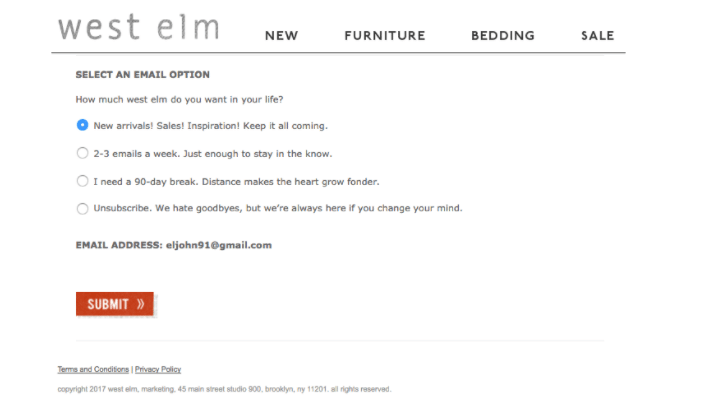
The majority of people will unsubscribe if they feel like businesses are constantly trying to sell them something. So it is important for companies to find the sweet spot by giving customers options that put them in control of the content they receive.
2. Remember: We live in a post-GDPR world
Modern businesses are extremely reliant on data for just about everything these days. But after all of the data leaks and breaches that occurred over the past years, as well as scandals coming to light of giant companies illegally gathering and selling customer data, consumers are warier than ever of sharing personal information.
Although the General Data Protection Regulation (GDPR) is only in place in Europe currently, it has implications that affect businesses around the globe. For example, if your business services customers within the EU, your data collection processes must be GDPR compliant. Furthermore, these regulations have opened the eyes of many consumers to the importance of data protection.
Email marketing is heavily scrutinized when it comes to data collection so it’s important to incorporate elements into your email marketing that build trust with your audience.
One way to encourage data sharing is through transparency. Let your customers know how data sharing benefits them with personalized offers or better experiences. See how Teva does with their email opt-ins for data sharing.

3. Don’t overdo the email designs
Flashy designs, animated graphics, and multiple CTAs within an email no longer work the magic they used to. Many people find them simply annoying or even spammy, especially if they are checking the message on their mobile device.
Instead, keep the focus on what your brand has to offer and not solely on how “cool” the email looks. Get to the point quickly. If you are promoting a sale, display some good deals and incorporate CTAs that drive customers directly to those product pages.
Also, be sure to stick to the elements that influence customer behavior - like reviews. Not only do reviews help to improve your SEO, but they can also increase click-through rates.
For example, The Pearl Source used Trustpilot to automatically embed reviews into their marketing content - including email marketing, on their website, and on product pages. This helped consumers see overall ratings and comments before buying.
By displaying their total number of over 6,500 verified reviews, the brand also established social proof and cultivated trust with new consumers off the bat.
In the world of email marketing and marketing as a whole, authenticity trumps flashy designs. This is a reality that has solidified itself over the past decade and will almost certainly continue into the 20s.
4. Automate your hyper-personalized campaigns
Automation in email marketing offers a lot of great benefits. It can do wonders to impact sales by lowering cart abandonment and boosting customer retention rates. The more relevant your emails are, the more revenue you stand to generate and the best way to ensure this is through personalized automation.
This goes beyond just including the customer’s name in the subject heading. Instead, every element of the messaging needs to be catered to a customer based on key data points, such as:
- Their product viewing history
- Past purchases
- Recent behavior
One great example is this automated email from Tarte Cosmetics, which sends out personally curated product suggestions based on the customer’s purchases and product views.
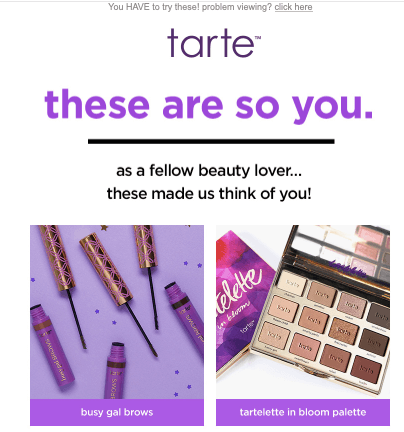
In 2020, it will be crucial for companies to use trigger-based automation to perfect the timing of their messages. For instance, say that a customer views a product and adds it to their cart, but ends up abandoning it. If an email is sent 24 hours later alerting them that stock is running low or the price has dropped, it could result in a conversion.

In conclusion
In 2020, it is quite apparent that consumers want more control over their experiences and interactions with brands. So, it is important that marketers understand how to accommodate consumers’ preferences when it comes to email marketing - while still being able to increase sales.
By opting for permission-based marketing and including more elements that matter to consumers like personalization, reviews, and data sharing options, you can expect to see impressive returns from your email marketing in 2020.
Manish Dudharejia is the President and Founder of E2M Solutions Inc.
The post Four key email marketing practices to lead your business into 2020 appeared first on Search Engine Watch.
Marketing Strategies
Why investing $5.6M in one Super Bowl ad might not be as crazy as it seems
It’s that time of year again.
You know, when the faint smell of chicken wings, Budweiser, and buffalo dip permeate offices across this great nation.
Ah yes, the Super Bowl aftermath.
If you don’t like football or your favorite team didn’t mean the cut, millions of viewers still tuned in to the big game for two reasons: the halftime show and of course, 30-second commercials.
While on the topic of the halftime show, can I get an amen for Shakira and J-Lo ? Shout out to 40+ year old mothers absolutely dominating their choreography and proving to mothers like me that rock hard abs post-child are possible!
Back to the topic of conversation: Super Bowl ads.
I personally am a huge football fan, but even still, there is nothing like a good old fashioned Super Bowl commercial to spark conversation days following the big game.
Of course, the after-effect of a Super Bowl ad is all about the buzz. That Monday morning viral social media storm chatting about things like: Bill Murray reliving Groundhog day in his brand new Jeep or any commercial that includes a puppy.
One thing is for sure, Super Bowl ads are some of the most entertaining and iconic commercials of the year.
But every February I wonder — is the prime time TV spot worth the massive price tag?
According to Digiday, “companies are shelling out on average $5.2 million to $5.6 million apiece to air a 30-second ad during the Super Bowl.”
This of course is just the cost of advertising. Let’s not forget the cost of creative, production, talent, etc.
Coming from a content-first background in inbound marketing that is easily trackable with tools like HubSpot, I’m curious, do B2C organizations ever truly reap a return on their investment? Or is the commercial hype all around sparking brand awareness and online buzz?
Let’s talk numbers
Yesterday I debated with a coworker why a company would spend $5.6M on one ad.
I couldn’t fathom how organizations could justify the cost.
I’m a numbers gal. I’m not a gambler. So dropping what could be the equivalent of an SMB’s entire annual revenue on one ad seems frivolous to me.
That’s when my coworker Nick reminded me of something interesting that swayed my perspective: “After watching last night’s game, Just imagine how many people are going to go out and buy Planters this week simply because they think that Baby Nut is the cutest thing they’ve ever seen.”
Have no idea what I’m talking about? Check out Planter’s 2020 ad on the rebirth of their famed icon here - now dubbed Baby Nut.
To Nick’s point, think about how many viewers are actually engaged during the Super Bowl.
While the numbers aren’t just in for this Sunday’s game, last year’s 2019 Super Bowl brought in an estimated 98.9 million viewers.
With live viewing aside, it’s important to remember the pre-game hype.
Many commercials (or back stories to game day commercials) are actually viewed online before, during, and then after the big game.
For instance, take the Planters back story ad.
Last week they aired news that their mascot Mr. Planter “died” just days before they revealed their Sunday commercial revealing their new brand logo: Baby Nut.
Suffice to say, Super Bowl ads have become viral sensations even before game day.
On Thursday and Friday before the 2019 Super Bowl, 28 ads had already been viewed about 105 million times across YouTube alone.
That’s a lot of eyeballs consuming content in a very short period of time.
Show me the money
But while the viewership online and live is astounding, does it translate to revenue?
Are companies truly able to quantify customer acquisition from Super Bowl ad spend?
The reality is, advertising is not an exact science, and it is often difficult to measure an ad campaign’s success.
Sure, you can compare sales before, during, and after an ad campaign to calculate ROAS — a measurement of revenue per dollar spent on advertising.
So if it’s that difficult to tie back investment spend to revenue, why the heck should organizations invest in Super Bowl Ads?
Why commercials might be worth the investment
In my opinion there are three key reasons why it might make sense for a company to advertise during the Super Bowl.
New product launch
While there may be a bit of overlap between these three categories, when companies use the Super Bowl for a product launch, it’s usually quite simply to build awareness.
During Sunday’s game, I sat with my husband, who comes from a long line of car dealers.
When Genesis enlisted the help of John Legend and Chrissy Teigen to unveil their brand new SUV GV80, my husband and I took bets to guess what car commercial was coming.
Never did we guess Genesis — a luxury sub-brand of Hyundai — trying to reintroduce itself to the market.
The SUV was so impressive, my husband immediately picked up the phone and called his father — who is still in the car business — and asked what he knew about the SUV.
What’s even more impressive is the amount of views the ad has on YouTube. As of February 4, 2020, the video had over 26 million views.
Simply to entertain
These ads are meant to get a good laugh, building happiness and humor around a brand. Rocket Mortgage this year featured burly actor Jason Momoa getting comfortable in his home.
“What does home mean to me?” Momoa says. “It’s my sanctuary,” the one place on earth where he can truly be himself.
But the real Jason Momoa, according to the ad’s reveal, is a balding weakling who wears a wig, fake muscles, and a removable torso out in public.
“Home is where you feel the most comfortable. And Rocket Mortgage helps you feel comfortable financing that home,” says a narrator.
Talk about an odd ad.
While it certainly tickled my funny bone, the ad left me feeling unsure if I would ever do business with a company that didn’t take itself seriously. Especially one where my home financials depended on it
This is the danger of being quirky — people remember the ad — but not the company involved.
Tell a narrative about the brand
For me, this is usually an emotional play. When I think about companies that have done it best, Budweiser tends to stick out in my mind.
Every year, I wait to see their ad. It usually ties back to their brand and being all-American. They never really boast about product, but rather tell an impactful story.
This year Google told the narrative.
Google’s “remember Loretta ad” grabbed viewers’ attention with a nostalgic trip down lover’s lane.
I am a sucker for ads that tear at my heartstrings, so when Google used a real story of one of their employee’s grandfather who used Google to preserve the memories of his late wife, I was entranced.
Not only had I never thought to use Google for what they were suggesting, but it did highlight to viewers how technology can enhance the way we remember those who meant a lot to us.
Talk about a double whammy.
Invaluable investment?
I mean it’s none of my business if you want to blow $10M all in on a single ad — that’s your call.
Commercials are a tough thing to measure. Do they actually win you back business? Hard to say.
But there are some ads that stand the test of time and that will be talked about around water coolers for months to come. There are some ads that get shared and re-shared on social media. There are some companies whose ads are anticipated each year.
And maybe, just maybe, that’s worth more than whatever princely sum that company paid to FOX, an agency, and a production team to bring its message to the world.
-

 Finance4 months ago
Finance4 months agoBest Mortgage Rates
-
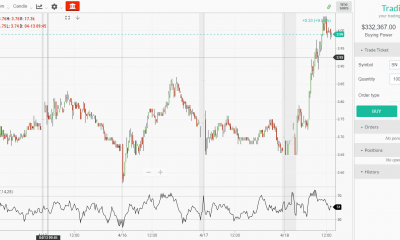
 Share Market4 months ago
Share Market4 months ago2 Simple Ultimate Oscillator Trading Strategies
-
Finance3 months ago
20 Gifts for Boys Under $30
-

 Economy4 months ago
Economy4 months agoWhat If Tariffs Cost Trump The Farm Vote?
-
Marketing Strategies3 months ago
The Beginner's Guide to LinkedIn Marketing
-

 Finance2 months ago
Finance2 months agoBest Cheap Life Insurance for 2020
-

 Share Market3 months ago
Share Market3 months agoThe Streaming Wars Enter Their Second Act
-

 Economy2 months ago
Economy2 months agoWho are the elites?, by Alberto Mingardi











